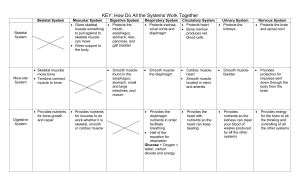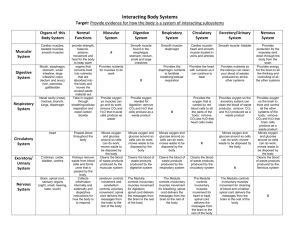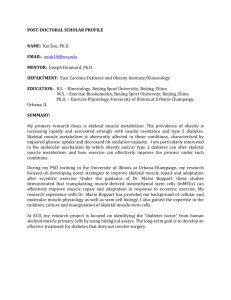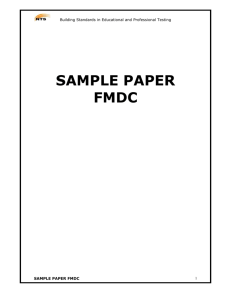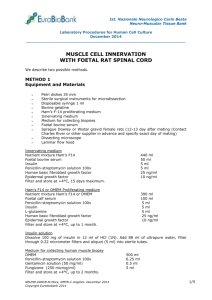File
advertisement
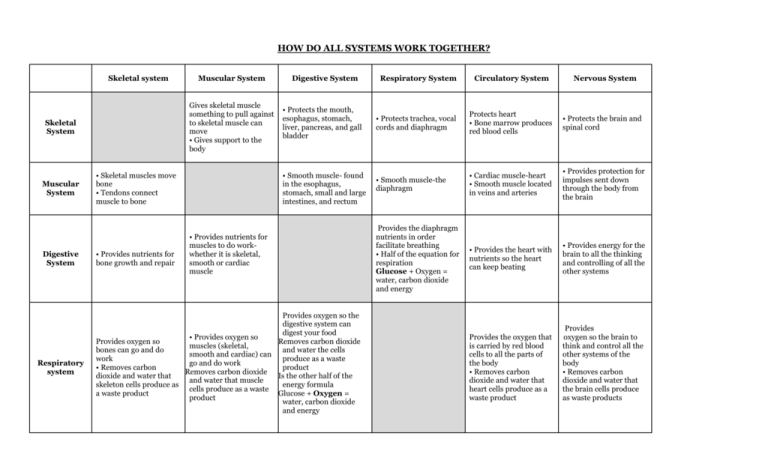
HOW DO ALL SYSTEMS WORK TOGETHER? Skeletal system Gives skeletal muscle something to pull against to skeletal muscle can move • Gives support to the body Skeletal System Muscular System Digestive System Respiratory system Muscular System • Skeletal muscles move bone • Tendons connect muscle to bone • Provides nutrients for bone growth and repair Digestive System • Protects the mouth, esophagus, stomach, liver, pancreas, and gall bladder • Smooth muscle- found in the esophagus, stomach, small and large intestines, and rectum • Provides nutrients for muscles to do workwhether it is skeletal, smooth or cardiac muscle Provides oxygen so the digestive system can digest your food • Provides oxygen so Provides oxygen so • Removes carbon dioxide muscles (skeletal, bones can go and do and water the cells smooth and cardiac) can work produce as a waste go and do work • Removes carbon product • Removes carbon dioxide dioxide and water that • Is the other half of the and water that muscle skeleton cells produce as energy formula cells produce as a waste a waste product • Glucose + Oxygen = product water, carbon dioxide and energy Respiratory System Circulatory System Nervous System • Protects trachea, vocal cords and diaphragm Protects heart • Bone marrow produces red blood cells • Protects the brain and spinal cord • Smooth muscle-the diaphragm • Cardiac muscle-heart • Smooth muscle located in veins and arteries • Provides protection for impulses sent down through the body from the brain Provides the diaphragm nutrients in order facilitate breathing • Half of the equation for respiration Glucose + Oxygen = water, carbon dioxide and energy • Provides the heart with nutrients so the heart can keep beating • Provides energy for the brain to all the thinking and controlling of all the other systems Provides the oxygen that is carried by red blood cells to all the parts of the body • Removes carbon dioxide and water that heart cells produce as a waste product Provides oxygen so the brain to think and control all the other systems of the body • Removes carbon dioxide and water that the brain cells produce as waste products Circulatory system Nervous system Moves oxygen and glucose around the body so cells can do work • Moves wastes so they can be disposed by the body In the brain-cerebrum controls movement and cerebellum controls voluntary movement • The spinal cord delivers the messages from the brain to the rest of the body • Moves oxygen and glucose around the body so cells can do work • Moves wastes so they can be disposed by the body • Moves oxygen and glucose around the body so cells can do work • Moves wastes so they can be disposed by the body • Moves oxygen and glucose around the body so cells can do work • Moves wastes so they can be disposed by the body • In the brain-cerebrum controls movement and cerebellum controls voluntary movement • The spinal cord delivers the messages from the brain to the rest of the body • The Medulla, located inside the Brain Stem, controls involuntary muscle movementdigestion • The spinal cord delivers the messages from the brain to the rest of the body • The Medulla, located inside the Brain stem, controls involuntary muscle movementbreathing • The spinal cord delivers the messages from the brain to the rest of the body Moves oxygen and glucose around the body so cells can do work • Moves wastes so they can be disposed by the body • The Medulla, located inside the Brain stem, controls involuntary muscle movementheartbeat • The spinal cord delivers the messages from the brain to the rest of the body
